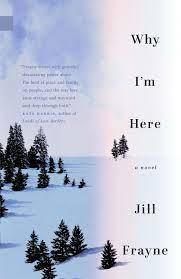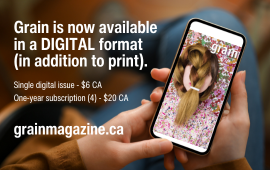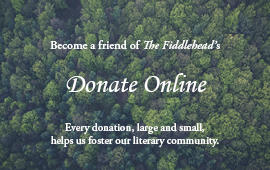Posted on March 22, 2023

Who hasn’t wanted to be the fly on the wall of a therapist’s office? To hear the secrets people pay others to know? Jill Frayne’s Why I’m Here is a novel set in Whitehorse, Yukon, in 1995 and tells the story of Helen Cotillard, a counsellor who works at the only counselling agency in the Territory. Out of necessity, Helen “took all comers” in her practice. Her new client, Gale, is a scrappy and unhappy adolescent from Cobalt, Ontario, who is brought to therapy by her stepmother. Helen learns that along with her toxic mother, Mindy, Gale has had to leave behind a younger sister, Buddie, in Cobalt. Gale’s concern for Buddie stirs up memories for Helen, leaving her uneasy about her role as a therapist. She wonders — how much good can a counsellor do? How much good does she do?
The book’s narrative expertly weaves Gale’s story with Helen’s daily life in Whitehorse, shining a light on the dangerous relationship between Gale and her abusive mother, Mindy, and on the bonds that bind daughters to their mothers. Parents fail their children in Frayne’s novel, but with the exception of Mindy, they repeatedly try to be there for them. The reader witnesses as mothers are misunderstood, present in positive or negative ways, and as fathers are passive, absent, or ineffectual. Adults, such as the stepmother, Sandy, and Helen’s failed attempts to connect with Gale in meaningful ways are the lifeline that lift the narrative from sad to hopeful.
The story unfolds against the backdrop of the Yukon’s deadly environment, a place where a mistake made outdoors can end someone’s life. A place where much of the population goes out in all types of weather nevertheless to explore the edges of what a human body can endure. Frayne captures this northern celebration of physicality in Why I’m Here: Gale finds solace on her bike and the freedom it brings her as she exerts her lungs and legs up and down the Two Mile Hill; Helen finds the same solace on skis or snowshoes in the backcountry, or in immersing her tired mind and body in the hot, soothing waters of Takhini Hot springs, or in her drawing practice that attempts to render the hardships written on the bodies of the nude models who reveal their scars at class.
Gale never begins to believe that she belongs in this Yukon landscape. Frayne’s use of arresting images to describe the vast and uncaring northern environment works well to describe the broken inner worlds of her two main characters. She writes “The pass was harrowing. In summer it was a desolate place of tortured rock, every growing thing stripped away by ferocious winds tunnelling up the valley.” A portrayal that works equally well to evoke Gale’s relationship with Mindy. The last line of this passage, “Just the dauntless little spruce, like stick soldiers, managed to take hold” describes Helen’s own spirit as she stubbornly makes a life for herself in the North.
Frayne’s description of winter, of how “the planet tipped away from the sun, and humans in those Northern latitudes dug into their shelters and handholds to keep from falling off the earth” perfectly describes the way Northerners schedule themselves more in winter, gather with friends and family more frequently to combat the absence of light; human connections that are sparks in the long dark.
She also uses the theme of migration, the Trumpeter swans that turn up in Whitehorse each spring, only to fly away again in the fall, to explore the patterns of the human population. Helen plants herself firmly in the Yukon, but a part of her still lives in Ontario, and she travels there to see her family and friends each Christmas. This seasonal yo-yoing between places is common in the north and is as much a way to maintain contact with friends and family down south as it is a way to break up the long, dark, winter months. However, these migrations can also create fissures in self and community, hidden or buried crevasses like those found on Llewellyn glacier that can swallow a person whole. Why I’m Here asks what influences support identity and belonging in a new place, and what dynamics deny a transplant to thrive? And can we ever truly belong somewhere new when the place we were born has so strongly imprinted itself on us?
The novel propels the reader on an emotional journey that begins in Helen’s office and follows the inner lives of therapist and clients as they grapple with their pasts in the place now called home. With alternating points of view, the author has created an immersive world for the reader to fall into, and wish to return to. She brings alive the wilderness city of Whitehorse where the “trees on the far bank stabbed up like a fistful of arrows, and behind them, the smooth domes of the mountains shone with snow.” She also compellingly renders the small pockets of comfort surrounding Whitehorse, such as the charming town of Atlin, the Takhini Hot Springs, and the White Pass.
Why I’m Here is a balm for any dislodged northerner, like me, or anyone who has struggled to reclaim a sense of belonging in a new location. As an administrator who once worked for the only counselling agency in Whitehorse in the nineties, I can attest that Frayne’s rendering rings true both in my memory and in my heart.
— Sherry Coffey
is an award-winning writer currently finishing a CNF manuscript. Born in the Yukon, she now lives in Fredericton.










